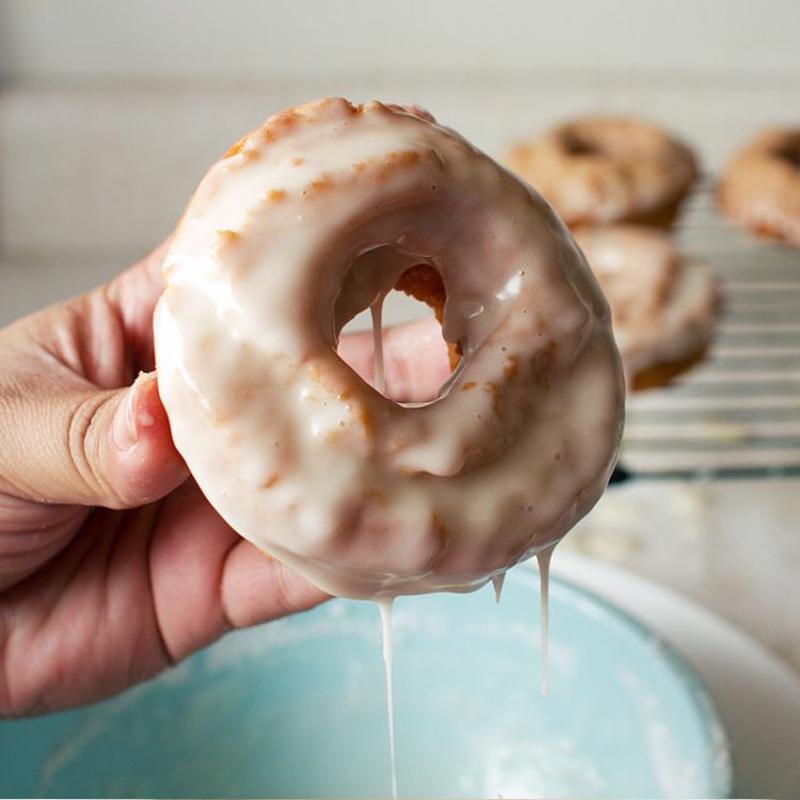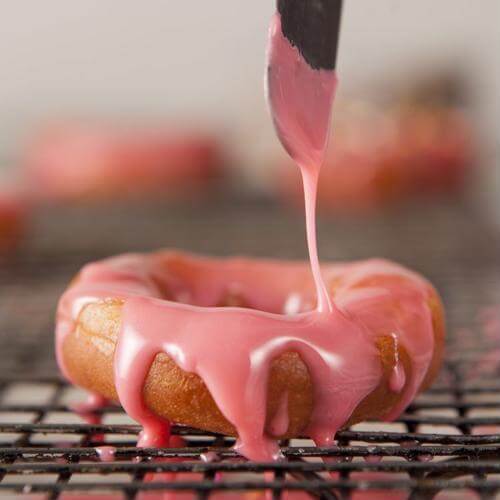Glazing techniques the pros use

When creating the perfect dessert, every pastry chef in training wants to identify the best technique, the most delicious flavors and incorporate the latest trends in baking. Each of these is important.
But consumers won’t discover the delectable flavor or appreciate the light, airy texture until they’ve taken a bite. And in order to get to that point, they need to be intrigued enough to try your pastry.
An eye-catching glaze can be just the thing to bring in new customers and attract people to try a unique dessert.
Basic vanilla glaze
You can’t go wrong with a basic recipe. This vanilla glaze from King Arthur Flour goes well on doughnuts, cupcakes or any other confection you want to top off with a simple frosting. It can also provide a medium onto which you can toss sprinkles or add a decorative berry or other topping.
Combine light corn syrup, melted butter, vanilla extract, powdered sugar and milk or water. Stir until smooth and apply to your pastry – it’s that simple.
 A basic vanilla glaze can liven up a dull doughnut.
A basic vanilla glaze can liven up a dull doughnut.Egg wash
Many pastry chefs use one simple ingredient to add shine or color to their pastries: an egg. Sometimes it’s mixed with milk, water or cream; sometimes it’s separated and only the white or yolk is used. Which egg wash to choose all depends on the desired effect, Fine Cooking explained.
If you want your pastry to be:
- Browned and slightly glossy, use a whole egg with water.
- Browned and very glossy, use a whole egg with milk.
- Minimally glossy but evenly browned, use just the egg white.
- Slightly more browned and shiny, use the egg yolk only, or mix it with water.
- Very browned, use an egg yolk with cream.
- Deeply browned but more matte than shine, use an egg yolk with milk.
If you’re looking for a glaze that’ll brown your pastry but not provide any shine, use only milk. This is common for pastries like scones, which will brown on the bottom but not on the top, making the product look slightly underdone or lackluster. The milk – or rather, the amino acids and unique sugars within – will brown and create a more attractive appearance, Fine Cooking explained.
Mirror glaze
Few glazes are as striking as the mirror glaze. The result of this technique is a reflective, mesmerizing surface that eaters will think twice about breaking with their fork – but they won’t hesitate any further once they taste it! Mirror-glazed pastries may look futuristic, but Today reported this French technique has actually been around for several decades.
To make the glaze, bloom gelatin in water, following the directions on its container. Mix water, sugar, Dutch cocoa and crème fraiche, then bring to a boil. Remove the gelatin from the water, squeezing out any excess drops, and add to the cocoa mixture, straining through a chinois. Let cool; don’t apply until the glaze has reached at least 120 degrees Fahrenheit. Don’t serve until the glaze has fully set, around 87 degrees.
Always apply this glaze to a cream frosted pastry. A bare cake, doughnut or other pastry will soak up the mirror glaze.
Apple cider or coffee glazes
Glazes are often just about appearance, but they don’t have to be. Adding some flavor to your glaze can give a unique touch to your pastries.
For an autumnal doughnut, an apple cider glaze can add interest and tie back to the season. Mix apple cider, heavy cream and powdered sugar until smooth, King Arthur Flour explained.
A coffee glaze can also provide doughnuts or other desserts with a cheerful flavor profile. To make, Epicurious instructs to dissolve espresso powder into boiling water, then mix in corn syrup, powdered sugar, vanilla and salt.
For both recipes, dip your doughnuts into the glaze and let the excess drip off.


